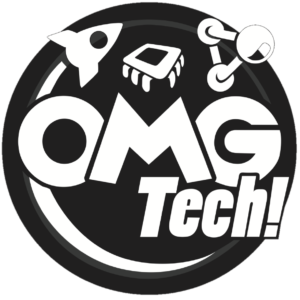Watch what happens when you mix and acid and an alkalin
Volunteer story - Ruth James: Why do I do this?
I became a OMG Tech Ranger after my friend Matt, (who runs the coding workshop at OMG Tech) recommended I ‘give it a go’! The first event I help out with was in South Auckland, at ParkJam; there were 4 Tech Rangers (including me!), 6 robots and a endless supply of eager participants! Ever since then – I’ve been part of the Robots team!
At this point – I’d like to point out I DON’T come from a robotics or electronic background, I’m not an engineer and I don’t know any programming languages! BUT, I have worked in the NZ tech industry for the last 9 years and for the last 2 years I’ve been involved with a number of initiatives encourage kids to get into STEM (especially software engineering and computer science!)
There’s a global shortage of skilled IT people in the industry, and as tech becomes bigger (which it inevitable will!) – this will only perpetuate unless we make some radical efforts to improve the situation.
Don’t get me wrong, I’m not just doing this so we can fill all the vacancies in the tech industry! As Steve Jobs put it ‘Everyone should know how to program a computer, because it teaches you how to think!’
For me, tech isn’t about being a lone code monkey drinking energy drinks and eating pizza (which the common social stereotype seems to portray!)! It’s about problem solving, working together collaborative, following your passion, doing something that will create benefit to the end user and solving real life problems! Through all the OMG Tech workshops we run, we encourage all our students to see tech in the same way!
Not only do we encourage our students to think differently we encourage them to learn differently. The robotics workshop we run is based on tactile and collaborative learning. Most students work in pairs when programming their robot, they learn by trail and error and build up a resilient and agile mindset while doing so. As someone who’s dyslexic, and remembers that feeling of anxiety and frustration when learning classic classroom methodologies such as ‘chalk and talk’ or text book learning. I understand the importance of allowing students to experience their own personal ‘eureka’ moment! I think this is the BEST way to learn anything!
Made with Code – Tesca
Testing the happy path – Coding Tips
Imagine you are coding a game where the player needs to pick up the red key, so they can open the red door.
When the code is ready, you’ll want to test it. You might try picking up the red key, then go to the red door and see if it opens. It does! Yay, it’s working – or is it?
When you test everything going right, this is called testing the happy path. But it’s also important to test the other paths. For example:
- What if you try to open the door, but without the key? The door should stay closed.
- What if you try to walk through the door when it is closed? You should not get past.
- What if you pick up the blue key, and try to open the red door? It should not open.
Those are ideas for a game. On a website, there are also different paths to test:
- What if someone tries to log in, but their password is wrong?
- What if someone bids on TradeMe, but someone else already made a higher bid?
- What if someone clicks ‘Send’ on an email, but they forgot to say who the email was to?
It’s really important that the program knows what to do when unexpected things happen. To be a great software tester, you need to think about all the possibilities – not just the happy path!
Milk & Dishwashing Liquid - Dylan Chandra
The future of robotics and 3D printing
Here is a part of a new Netflix show called White Rabbit Project.
The look at robotics and 3D printing as limb replacement. Check out her archery skills!!
https://www.facebook.com/grantimaharaofficial/videos/1890299361185529/
Disassembly
Medical uses
As a 3D Printing expert, I often get asked “but what can you actually use 3D printed things for”. The assumption being that 3D printing is for people to make toys and other such frivolous activities from the comfort of their own homes. However, the healthcare sector has not been one to sit at home printing their game avatars, they have used 3D printers to revolutionise the way that we think about medical science.
Here is an article I found, which lists some of the ways that medical science has used 3D Printers.
Unmaking, eWaste & 3D Printing
Now I know that this is meant to be the unmaking section, but when I read this article I couldn’t resist crashing right into the 3D Printer’s department. The Poly University of Hong Kong has created the Curiosity, a cheap 3D printer made from e-waste. Check it out here.
The tools of the trade
Unmaking is serious stuff.
For those that think we just tear things apart with hammers, you’d be wrong… we tear things apart with screwdrivers and pliers too. One thing we do teach at unmaking is how important it is to have the right tools for the job. Especially when we catch one of you using a screwdriver as a hammer (or a screw-hammer as we like to call it).
Even though the ones we use are found in most houses, or garages, here is an interesting article about electronics tools that you might not know about.











